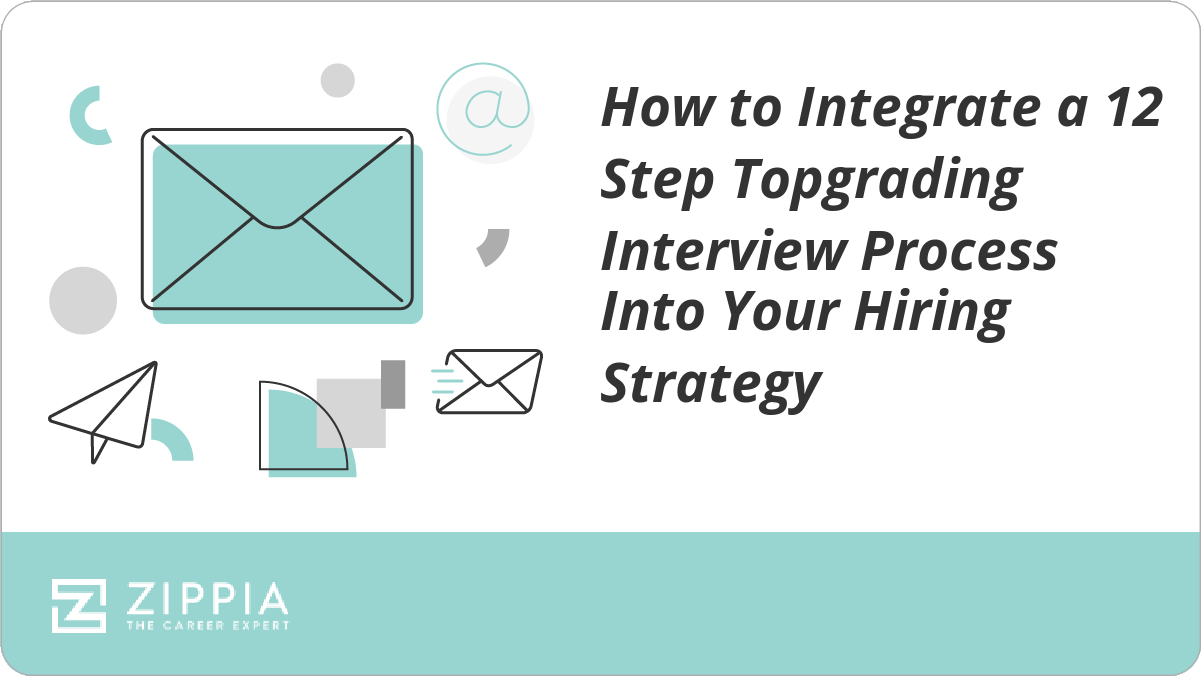When you’re hiring a new employee, you will quickly learn that there is no shortage of philosophies on how to choose the best candidate for a role, especially when it comes to conducting interviews.
One of the most common interview formats is a structured interview, and in this article, we’ll explain what a structured interview is, how to conduct one, and the benefits and downsides of structured interviews. We’ll also share some tips on how to make the most of your structured interviews.
Key Takeaways:
-
A structured interview sticks to a list of preplanned questions and scores interviewees’ answers on a predetermined scale.
-
Structured interviews are effective at minimizing interviewer bias and streamlining the hiring process.
-
Since there is so little small talk in a structured interview, it can be tricky to get a feel for how the candidate would fit with the company culture.
What Is a Structured Interview?
Also known as a standardized, planned, or patterned interview, a structured interview follows a preset list of questions asked in a specific order. Each answer is then rated with a predetermined scoring system based on a range of acceptable responses.
Rather than asking questions specific to the candidate’s resume and experience or having a more conversational interview, these structured interviews are more formulaic and standardized to ensure each interviewee is asked the same questions in the same order.
How to Conduct a Structured Interview
-
Determine the requirements for the position. Refer to the job description to determine what it is you’re looking for in a candidate, and be specific.
For example, if you list communication skills as being important, go one step further and ask what that means in this particular role. Public speaking and writing are both forms of communication, but the candidate may not need to have both of those to be successful in this position.
By narrowing down your requirements in this way, you’ll have a better idea of what it is you’re looking for.
-
Create a list of questions. Include behavioral and situational questions that highlight each of the requirements you listed earlier. You can also include follow-up questions to probe deeper into candidates’ answers – just remember to keep them the same for every interview.
Your list of questions will likely go through several iterations as you and your team reword them and rearrange them to flow more naturally and effectively.
-
Create a scoring system. Once you have your list of questions, create a scoring system. Usually, a scale of one to five or one to seven works best as you can have “below average,” “average,” and “above average” rankings that way.
Define which types of answers will fall on which part of the scale for each question. For example, for a question about the candidate’s time management skills, your scoring scale might look like this:
1 – Below Average: Demonstrates few organizational skills, regularly missing deadlines, and requires significant oversight from managers and supervisors.
3 – Average: Demonstrates moderate organizational skills, meeting deadlines regularly and requiring only occasional oversight and reminders.
5 – Above Average: Demonstrates excellent organizational skills, regularly meeting high-pressure deadlines and assisting others in doing the same.
Having these clear definitions is important to keeping the scoring consistent between interviewers and interviewees.
-
Conduct the interview. These types of interviews can be intimidating for both interviewers and candidates, but lean into it and stick to the “script” while still being warm and friendly.
Take notes about their answers, and resist the temptation to follow rabbit trails, fall into too much small talk, or evaluate them on criteria that aren’t on the list.
-
Compare scores. After you’ve conducted all of your interviews, compare your answer rankings to other interviewers’ and then use them to compare candidates and choose the one(s) with the highest scores.
This interview won’t be the only information you use to select a candidate, but it will help you quickly narrow down your list.
Benefits of Structured Interviews
-
It limits bias. By having a set list of questions that every candidate answers and making decisions based on how those answers score, you minimize the risk of discriminating against candidates based on unrelated attributes.
It’s impossible to eliminate bias fully, but a structured interview can help reduce it. It will also help remove even the appearance of bias and discrimination, which can be especially helpful when you’re hiring internally and may know a few of the candidates personally.
-
It’s efficient. Having a system you can use to quickly compare candidates, and interviewers’ opinions about them can make the hiring process much simpler.
Even if you just use a structured interview as one part of the hiring process, it can help you narrow down candidates quickly and fairly.
-
It makes it easier to compare candidates accurately. When you conduct unstructured interviews, you can find out interesting and unique information about each candidate.
However, this can make it difficult to compare apples to apples and ensure that you’re getting a candidate with all the skills you need them to have.
Structured interviews, on the other hand, make it easy to compare candidates based on the skills in the job description rather than the skills and topics that came up in your interview.
Downsides of Structured Interviews
-
You miss out on a natural conversation. Being able to converse casually with a candidate can tell you a lot about how they’d fit into the organization’s culture. Structured interviews often limit this, making it more difficult to get a feel for what the person is really like.
-
You miss out on interesting tangents. Sometimes candidates’ most valuable skills and experiences are only discovered by following tangents in the conversation about their answers, which you can’t do in a structured interview.
-
It isn’t foolproof. Structured interviews can make for a stiff and formal environment where candidates can get nervous, forget important information, or don’t come across well. In addition, bias can creep in with even the most impartial interviewers, and questions can be phrased incorrectly.
Tips for Conducting Structured Interviews
-
Use them along with other interview formats. Some people just aren’t good at making a first impression or at answering interview questions. If it makes sense ethically and practically, make your structured interview just one part of the hiring process so you can get a fuller picture of what each candidate brings to the table.
-
Consult subject matter experts. If you work in HR or are a recruiter who doesn’t fully understand the technical aspects of the position you’re hiring someone to fill, send your interview questions and grading scale to subject matter experts before you conduct your structured interview.
They’ll make sure that your questions and scoring systems are reasonable, will get the information they’re looking for, and match what they’re looking for in a candidate.
Structured Interview FAQ
-
What is the purpose of a structured interview?
The purpose of a structured interview is to make the hiring process more objective. Because you’re asking each candidate the same interview questions, you can compare them more accurately than you would if you just go wherever the conversation takes you.
Since you’re scoring each answer, structured interviews also make it easier to show why you chose a particular candidate, eliminating a significant amount of bias. This can be especially helpful in situations such as interviewing internal candidates who you already know or have worked with in the past.
In addition, structured interviews allow multiple interviewers to pool their notes and scoring decisions and more accurately compare candidates whether they all saw each interviewee or not. This not only helps improve objectivity but also helps the hiring process work more efficiently and effectively.
-
What are the characteristics of structured interviews?
The characteristics of structured interviews include:
-
Having a set list of questions
-
Asking those questions in a particular order
-
Scoring candidates’ answers on a predetermined scale
All of these characteristics make structured interviews easy to replicate between different candidates and different interviewers, making them a highly objective interview method.
There is such a thing as a semi-structured interview as well, which is an interview that has a set list of questions that interviewers can add to or deviate from as the interview progresses. This type of interview is different from a structured interview because no scoring takes place, and they aren’t easily replicated.
-
-
What occurs during a structured interview?
During a structured interview, the interviewer(s) will ask the candidate a predetermined list of questions in a particular order and will score their answers on a predetermined scale.
These questions can include everything from general information about the candidate to situational interview questions about applicable skills.
Interviewers won’t deviate from the set list of questions in a structured interview, which means there isn’t much small talk besides perhaps a few pleasantries at the beginning and end of the interview.
This type of interview may come across as cold and intimidating to the interviewee, but it’s actually beneficial to them because it reduces bias among interviewers. However, it’s still important for interviewers to do their best to set the candidate at ease as they ask their questions.
- Interviewer Tips
- Structured Interviews
- How To Be A Good Interviewer
- Interview Note-taking
- Memorable Candidate Interview Moments
- Top Companies With Unique Interviewing Strategies
- How To Be A Consistent Interviewer
- Topgrading Interview Process
- How To Use Technology To Screen Interviewing Candidates
- How To Make A Great Impression With Your Candidates
- How To Be An Expert Interviewer
- How To Build Rapport During An Interview
- The Do's And Dont's Of Personality Testing
- What To Pay Attention To When Conducting Interviews





